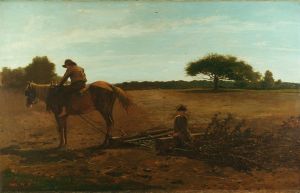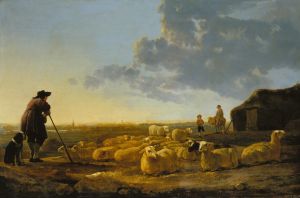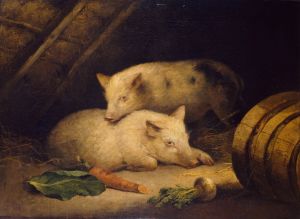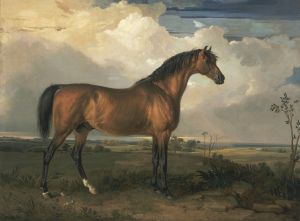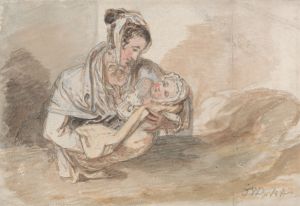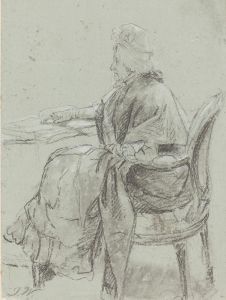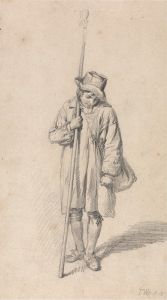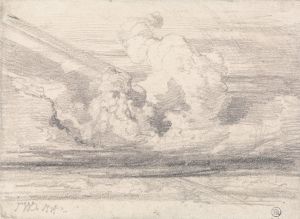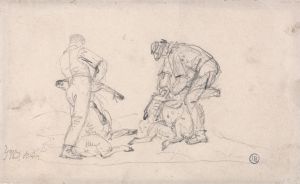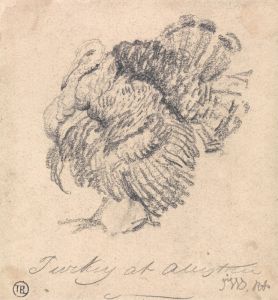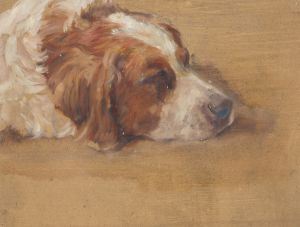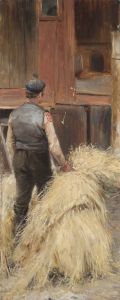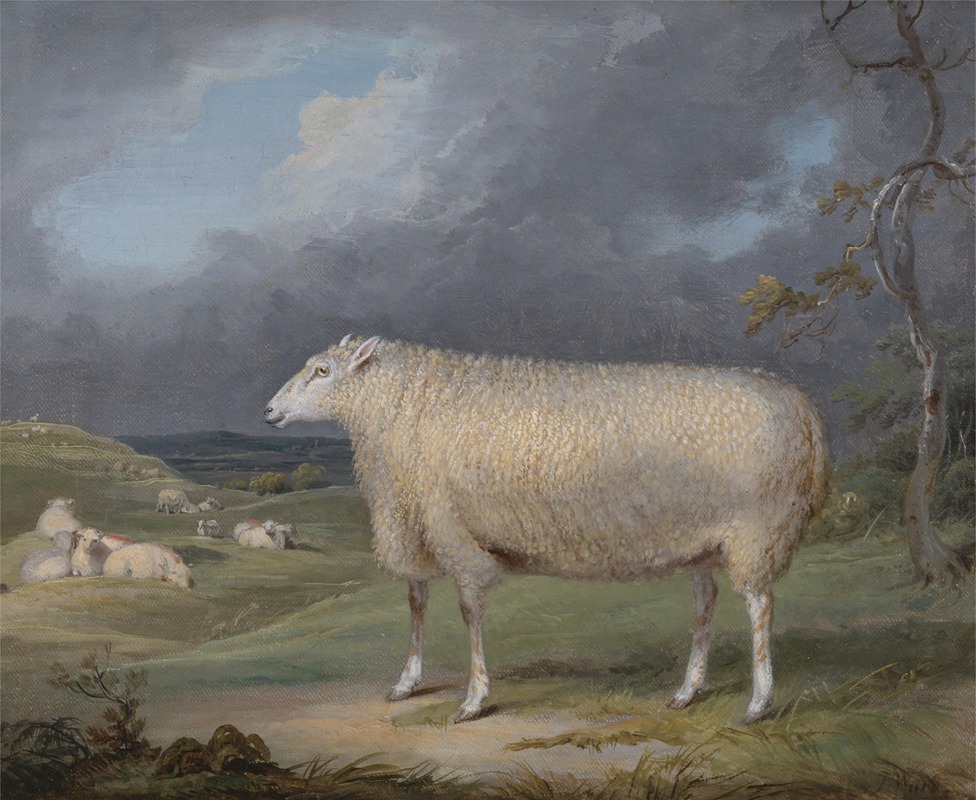
A Border Leicester Ewe
A hand-painted replica of James Ward’s masterpiece A Border Leicester Ewe, meticulously crafted by professional artists to capture the true essence of the original. Each piece is created with museum-quality canvas and rare mineral pigments, carefully painted by experienced artists with delicate brushstrokes and rich, layered colors to perfectly recreate the texture of the original artwork. Unlike machine-printed reproductions, this hand-painted version brings the painting to life, infused with the artist’s emotions and skill in every stroke. Whether for personal collection or home decoration, it instantly elevates the artistic atmosphere of any space.
"A Border Leicester Ewe" is a painting by the British artist James Ward, created in 1820. James Ward (1769–1859) was a renowned painter and engraver, particularly celebrated for his animal portraits and landscapes. He was a key figure in the British art scene during the late 18th and early 19th centuries, and his works are noted for their detailed and realistic depiction of animals.
The painting "A Border Leicester Ewe" showcases Ward's exceptional skill in capturing the essence and physical characteristics of livestock. The Border Leicester is a breed of sheep that originated in England in the 18th century, known for its distinctive Roman nose and long, erect ears. This breed was developed by crossing the Leicester Longwool with the Cheviot sheep, resulting in an animal prized for its wool and meat.
In this artwork, Ward presents the ewe in a naturalistic setting, emphasizing the animal's robust and healthy appearance. The ewe is depicted standing in a pastoral landscape, with lush greenery and a serene sky in the background. The attention to detail in the ewe's fleece and the careful rendering of its anatomy reflect Ward's deep understanding and appreciation of animal physiology.
Ward's ability to convey texture and form is evident in the way he paints the ewe's wool, capturing the softness and density of the fleece. The painting also demonstrates his mastery of light and shadow, which adds depth and dimension to the composition. The ewe's calm and composed demeanor suggests a sense of tranquility and harmony with its surroundings.
"A Border Leicester Ewe" is a testament to Ward's dedication to portraying animals with accuracy and empathy. His work was highly regarded during his lifetime, and he was elected a Royal Academician in 1811. Ward's paintings often served as valuable records of livestock breeds, contributing to the agricultural knowledge of the period.
The painting is part of the collection at the Yale Center for British Art in New Haven, Connecticut. It remains an important example of early 19th-century British animal painting and continues to be appreciated for its artistic and historical significance. Ward's legacy as an animal painter endures, and his works are studied and admired by art historians and enthusiasts alike.
In summary, "A Border Leicester Ewe" by James Ward is a notable piece that exemplifies the artist's skill in animal portraiture and his contribution to the documentation of livestock breeds. The painting captures the beauty and character of the Border Leicester ewe, set against a serene rural backdrop, and remains a significant work in the canon of British art.





